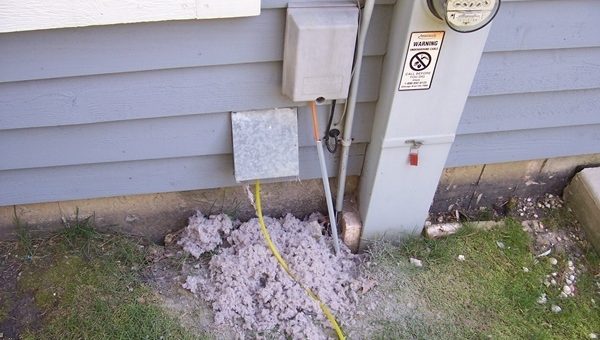
Dryer Vent Discharges
- Posted by ziad
- On June 9, 2023
- 0 Comments
- dryer vent cleaning, dryer vent cleaning ottawa, high dryer vent cleaning
To function safely and efficiently, a dryer vent properly discharges moist, heated air to the outdoors, not into wall cavities, attics or crawlspaces.
Vent to the Exterior
Firstly, check that your dryer vent terminates at an exterior wall or roof location. Vent ducting should run entirely to the building’s outside, attaching directly to an outside vent cover. Avoid routing vents into enclosed building cavities.
Avoid Attic Vents
Additionally, do not vent your dryer into the attic. While sometimes done to conceal vent ducting, attic vents trap warm, humid air inside insulation. This can cause moisture issues, mold growth and reduced insulation performance over time.
Avoid Crawlspace Vents
Furthermore, venting a dryer into a crawlspace should also be avoided. Exhaust moisture and heat build up under the home which can damage supports and cause issues with any sealed crawlspaces. Properly vent dryers directly outside.
Reduce Moisture
Correctly discharging dryer exhaust to the outdoors helps remove moisture efficiently from drying clothes before it becomes a problem. Up to several gallons of moisture can be released during a single dryer cycle.
Control Heat Buildup
Moreover, venting heated air outside controls heat buildup that occurs within dryer ducting and the surrounding areas. Air exiting dryers typically ranges from 120°F to 150°F, presenting a fire hazard if that heat is trapped.
Prevent Fire Risks
Lastly, improperly discharging dryer air into enclosed areas presents fire risks from lint buildup and excess heat. Attics and crawlspaces lack ventilation to disperse this exhaust air safely. Direct outdoor vents are required to reduce risks.
In summary, to ensure your dryer functions properly and safely, it is critical that the entire vent ducting terminates at an exterior wall or roof location with a vent cover. Avoid letting your dryer discharges go into attics, crawlspaces or any enclosed cavity which can cause moisture accumulation, excess heat buildup and fire risks over time.



0 Comments